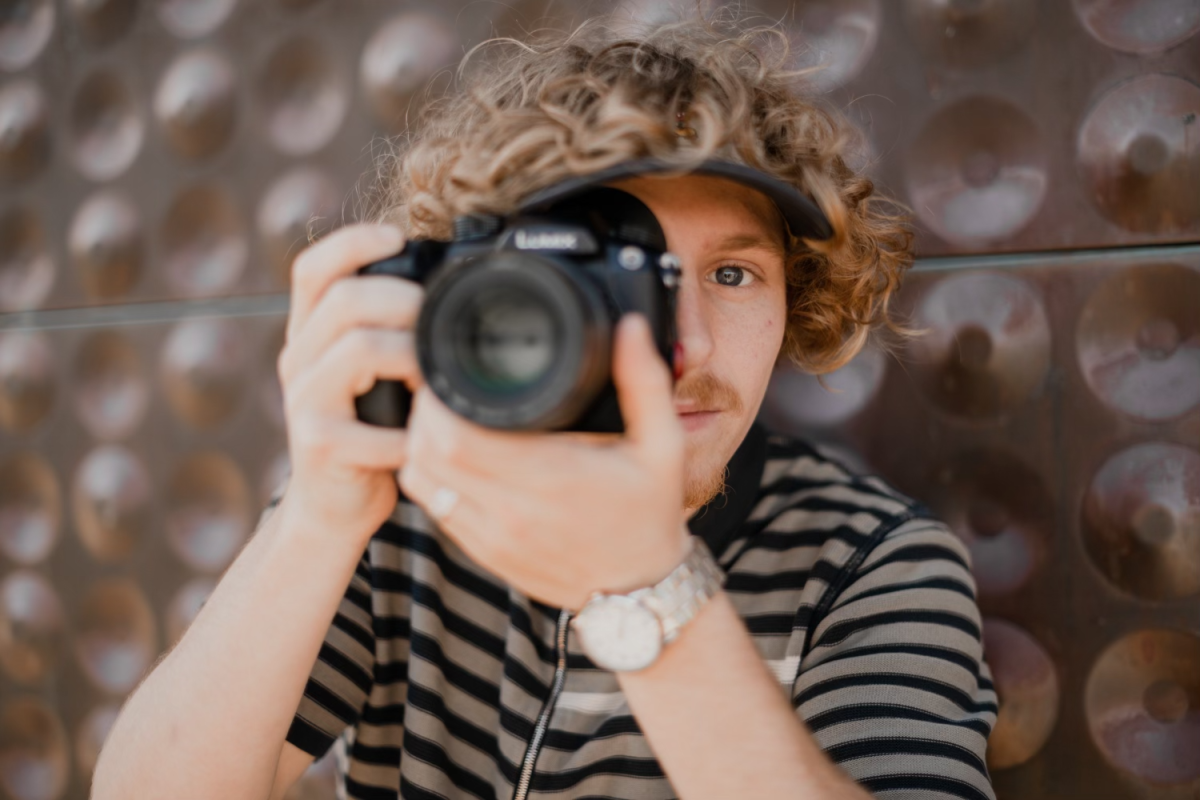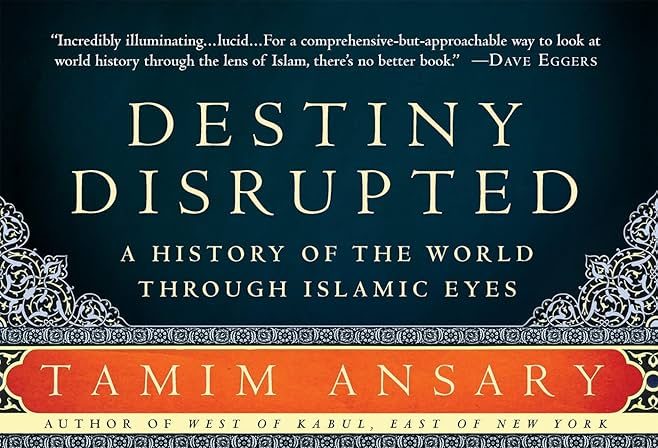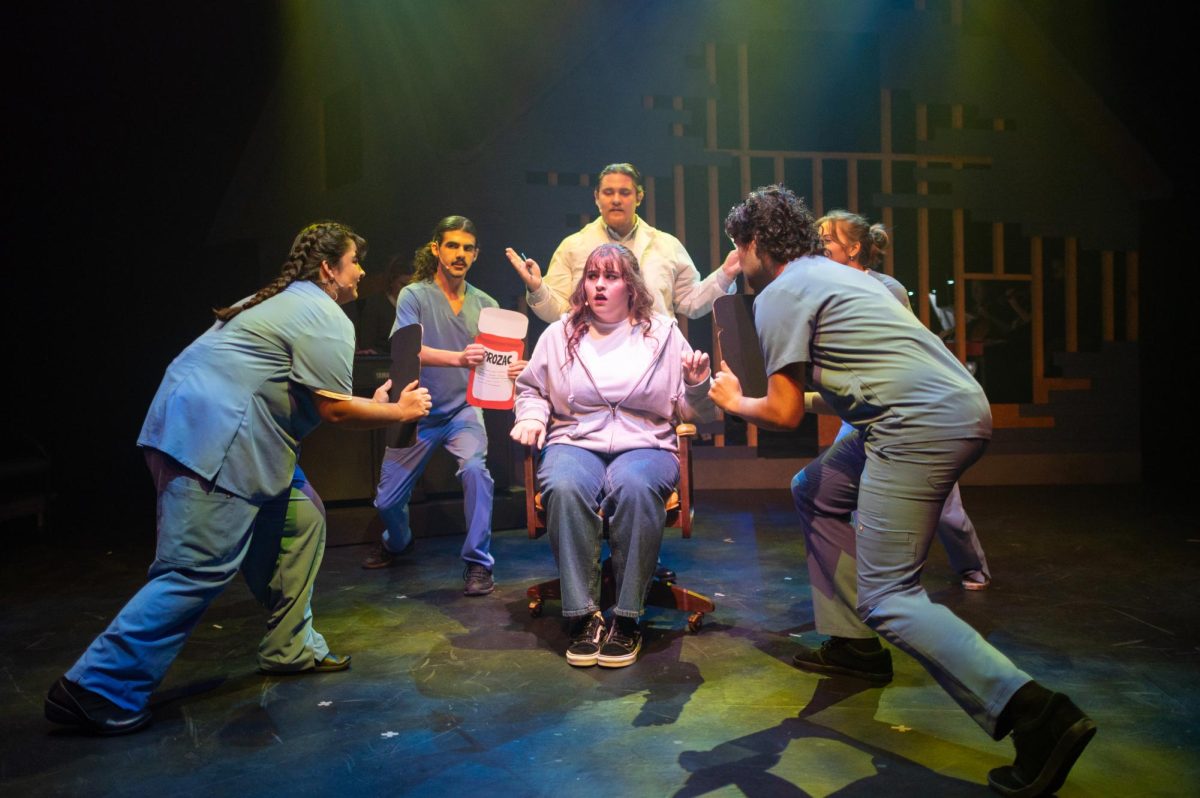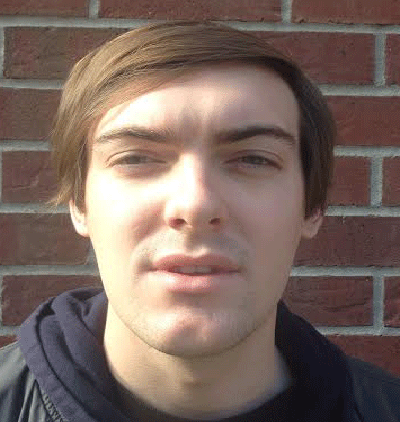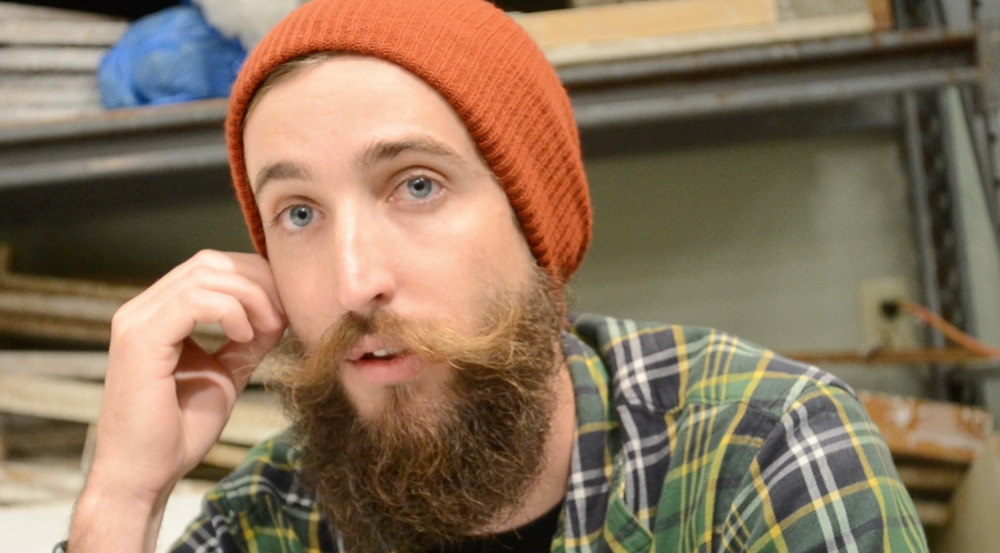
Graduate student and ceramics extraordinaire Chaz Martinsen is starting to see the light at the end of the tunnel.
Martinsen is set to earn his master’s degree in fine arts after next semester, with just the final piece of his project still to be completed.
From April 6-10, Martinsen will showcase his works in the University Art Gallery in Trinity Hall.
The smaller half of the two-room gallery will feature two to three racks displaying stacks of clay ammunition. One will contain thousands of clay replicas molded from both a 25mm shell used in the Bushmaster chain gun on Light Armored Vehicles and Infantry Fighting Vehicles, and a 30mm depleted uranium core from the A10 Warthog close air support aircraft. The other rack will support 10-12 clay shells from a tank, which are much larger.
Martinsen said he’s having the tank shell shipped out from New Jersey so he can make a mold out of it. It’ll be full size, and will end up being about 3 feet tall.
“I made these racks probably 2 feet long by 10 inches deep by 7 feet tall where the shells are gonna be stacked,” Martinsen said. “They’ll be pointed toward the viewer and stacked up above their heads. So it’ll be pretty imposing hopefully — unless of course you’re 7 feet tall.”
It’ll be hard to tell that they’re shells at first, which Martinsen says is fine because it should draw the audience closer to look at the textures.
“And when you realize what they are, being destructive devices and all, hopefully it’s like ‘Whoa, huh. Oh shit,'” Martinsen said.
The manufacturing technique Martinsen is using to make his objects is called slip casting. He molds the shells out of plaster and then pours in the liquid clay. The clay sits in the mold until it gets a wall of thickness and comes out hollow.
“It’s just a really easy way to mass produce and manufacture a bunch of the same thing,” Martinsen said. “A lot of the tableware, like dinner plates and stuff like that from Ikea, will actually be slip casted.”
Slip casting keeps the cost down and the prices low, and it’s not difficult to do. Martinsen also said that it doesn’t have a steep learning curve compared to hand throwing clay on a wheel, which has a lot more processes on top of the great skill required. Martinsen throws as well, but for what he’s working with and what he’s doing here at school, slip casting makes more sense.
Before Chico State, Martinsen was supposed to be an engineer. He earned a scholarship to San Diego State for environmental engineering design, but he wasn’t into the number-heavy aspect of the major and figured he didn’t belong after being forced to take remedial math classes. He took drawing classes just to satisfy the department’s general education requirements, and then he just kept taking more and more.
He eventually got his bachelor’s degree in applied design, with an emphasis in ceramics, and focused on projects about how society impacts the individual.
“I was doing the whole college thing,” Martinsen said. “You know, fascinated by all the silly things we put ourselves through, specifically with drugs and alcohol and the effect addiction can have on a person. I lost my uncle to alcoholism around the same time as well. I’d create these figures that would have these really patchy, crawly, crusty glazes where they would have parts of them missing or fragmenting apart, to kind of hint toward that to the viewer.”
In the gallery’s larger room, Martinsen plans to display his 3-D printed shapes. The objects are theoretical parts that don’t exist, but he has designed them to be things that could exist in the future.
He included this display because in addition to his main goal of becoming a teacher, Martinsen wants to manufacture military parts and objects to be used for space exploration.
“My idea is a push and pull between making military technology and the manufacturing of military objects versus space and scientific exploration,” he said. “Specifically NASA and how we’ve sort of politically lost interest in space exploration though it’s clearly the future. Sure, interest is building, but we’re not there yet politically, which has led to a lack of funding to do anything.”
Next to the 3-D objects, Martinsen will lay out computer-generated technical drawings that show four to five different views of each object. He’ll then reshape the same object out of clay, just larger in scale to bring everything back to the idea of hand manufacturing.
Martinsen is also required to give a lecture as part of his gallery show. On April 9, he’ll host a reception that’s open to the public, complete with snacks and drinks. He’ll primarily be discussing what the audience is seeing, why they’re seeing it and why they should care.
When it comes to ceramics, it is easy to see that Martinsen is passionate about his work and the creations that come of it.
“I just make things because I just really enjoy making,” Martinsen said. “I call myself an object maker. It’s fun to make things technically right and structurally sound.”
Trevor Whitney can be reached at [email protected] or @nicegrandmas on Twitter.





